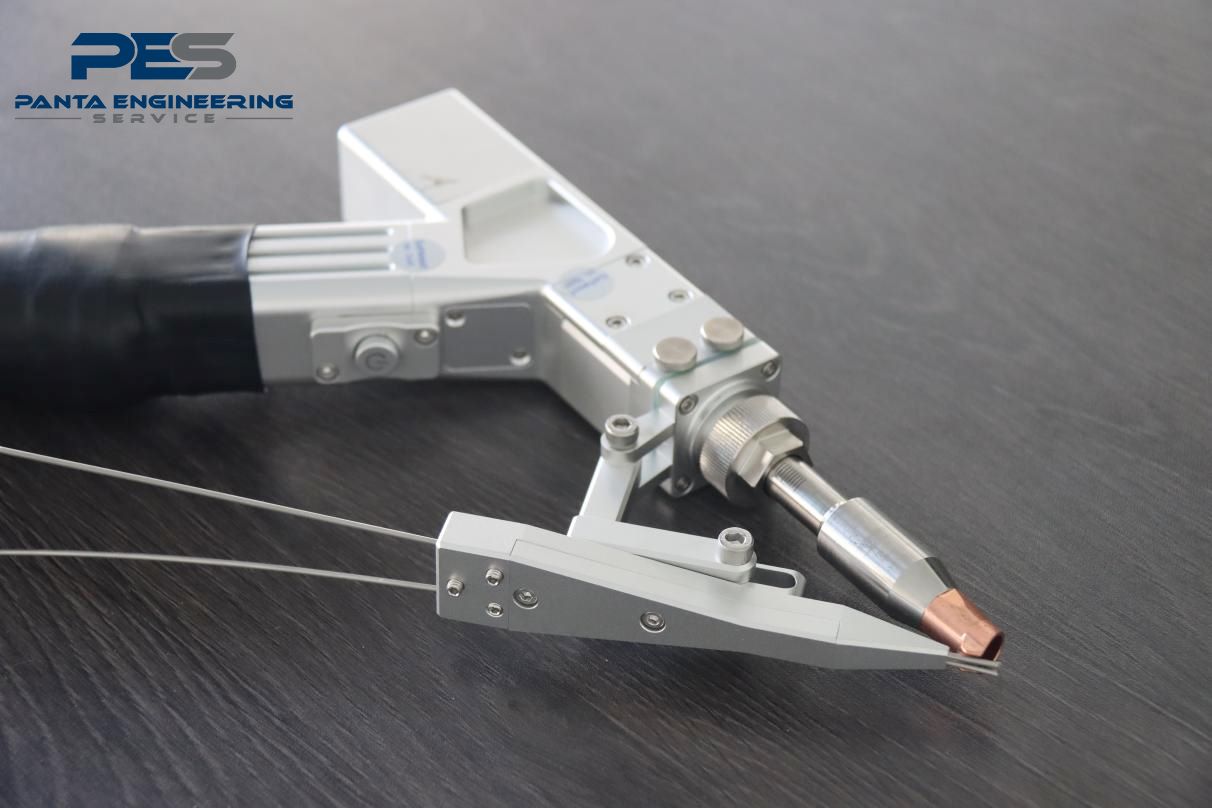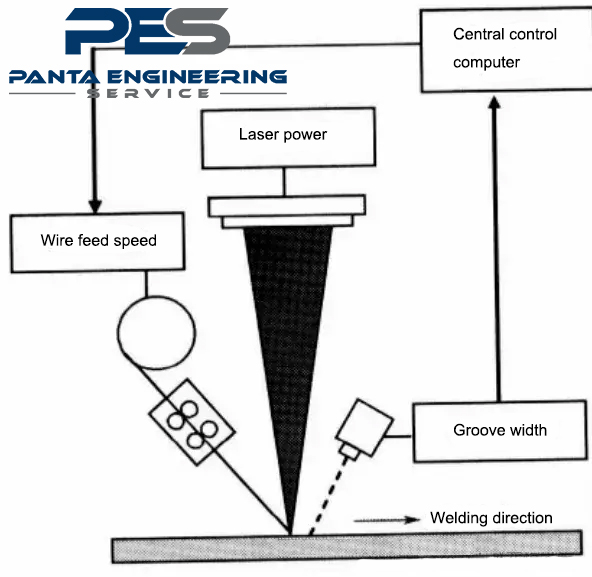Characteristics of wire feeding in laser wire welding
Aug 16, 2024Laser welding concentrates energy in a small range, instantly melts the welding wire and the base material to form a weld. Therefore, the welding depth after welding is large, the weld is narrow, and the speed is fast. It is suitable for self-melting welding, and usually no welding wire is needed. Of course, laser welding machines can also perform wire welding. Generally, welding wire needs to be added when the weld is larger than 1mm.

The filling of welding wire makes the laser welding process more complicated. Mastering the wire feeding characteristics of laser wire welding under different welding conditions is a prerequisite for obtaining high-quality welds.
Wire feeding speed is an important process parameter for laser wire welding. Reasonable selection of wire feeding speed can make full use of laser energy and improve production efficiency. The wire speed should be determined according to the gap amount of the joint. During laser welding, the welding wire is almost 100% transferred to the welding pool. Therefore, the wire feeding speed can be calculated based on the material balance of the welding process. The excess height of the weld section and the gap of the joint are both filled with welding wire.
According to different welding processes, the welding wire can be fed from the front of the laser or from the back, and at a certain angle to the optical axis. In laser wire welding, the welding wire is generally required to be coplanar with the weld on the vertical plane, so that when there is a slight fluctuation in the wire feeding process, the stable transition of the molten droplet can be guaranteed. The straightness of the welding wire is very important for the stability of welding, affecting the absorption of the beam energy by the welding wire and the stability of the welding process. In order to ensure that the welding wire is delivered to the intersection of the optical axis and the base material, a copper tube is generally used to guide the welding wire at the end of the wire feeding hose, as shown in the figure. A gas pipe is installed above the workpiece to blow helium or argon gas on the side to protect the molten pool and suppress plasma. For some metals that are easily oxidized (such as titanium alloys), a special protective cover is also required to protect the molten pool and the high temperature area of the weld.
Generally, the wire feeding angle is more suitable between 30° and 75°. The wire feeding position should be aligned with the center line of the weld as much as possible. When the wire feeding position deviates from the center line of the weld by 0.25mm, the melting efficiency of the 2mm welding wire will be reduced by 30%, and the melting efficiency of the 1.0mm and 1.2mm welding wires will be reduced by about 36%. Therefore, in the case of high welding requirements, the best method is to equip an optical weld tracking system for real-time monitoring and control of the welding wire position.
If the wire feeding speed is too fast or too slow, it will cause the accumulation or lack of wire droplets in the transition to the molten pool, and will also affect the interaction between the laser and the welding wire and the base material, thereby affecting the formation of the weld. The commonly used wire feeding mechanism needs to have a feedback system that can keep the set wire feeding speed unchanged during the welding process. The figure shows the composition of the laser wire welding system. In the high-precision welding process, the metal filling amount is required to be adjusted in real time according to the changes in the weld groove to ensure a stable and accurate filling amount to obtain good weld formation. The best solution is to equip a set of wire feeding control systems that can dynamically follow the changes in the weld groove.

Most laser wire welding uses cold wire. When the welding wire is not heated, a large part of the energy of the laser beam acts on the welding wire, which will undoubtedly reduce the welding speed. In order to make full use of the laser energy, the hot wire welding process can be introduced. Hot wire welding reduces the energy consumed by the laser on the welding wire and effectively increases the welding speed. The laser hot wire welding process requires an additional set of preheating equipment, generally using resistance heating. The electrode can be directly connected to the wire feeding roller, and the welding wire is instantly heated to a temperature close to the melting point through a large current. When the welding wire is sent to the edge of the welding pool, due to the high surface temperature of the welding wire, only a small amount of laser energy is needed to melt it. The molten welding wire can absorb a large amount of laser energy and conduct it to the parent material. Compared with self-melting welding, hot wire welding is more conducive to the absorption of laser energy. Therefore, the welding speed of laser hot wire welding can be higher than that of self-melting welding. In order to avoid oxidation of the welding wire metal, the heated welding wire part is only 3~5mm away from the intersection of the laser beam and the welding wire, which can avoid excessive temperature reduction of the heated welding wire. When using laser hot wire welding, there should be enough distance between the focusing lens and the workpiece to be welded for installing the heating device, and it is advisable to use a lens with a larger focal length. Although the focal spot diameter increases with the increase of focal length, which reduces the power density and is not conducive to energy absorption, increasing the focal length can increase the focal depth, which is more beneficial for thick plate welding.